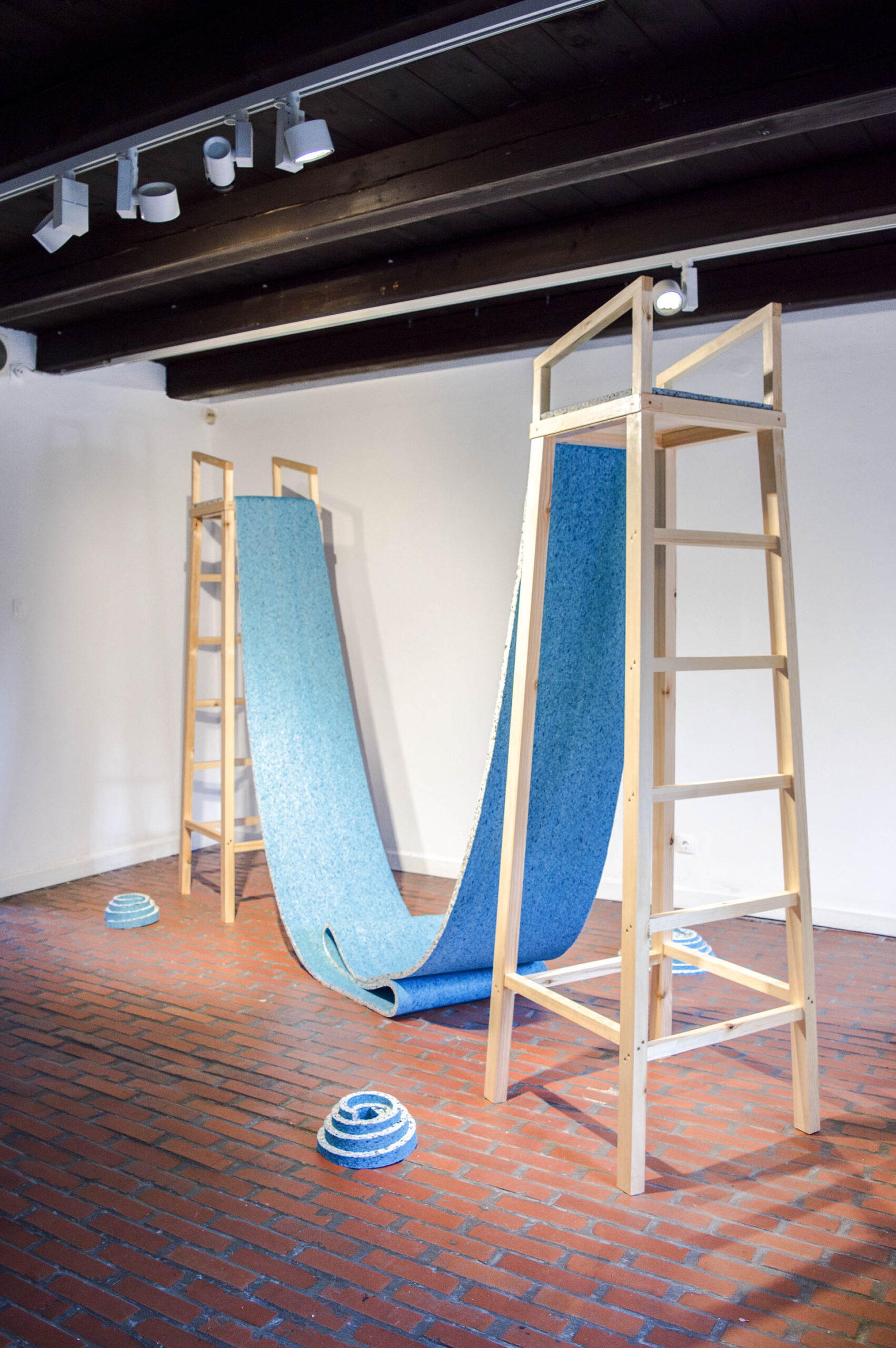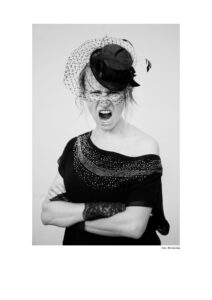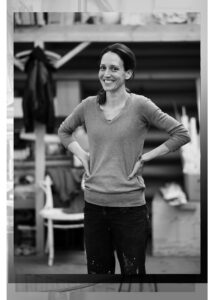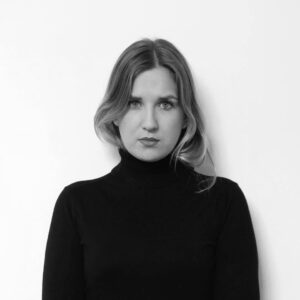Judit Lilla Molnár
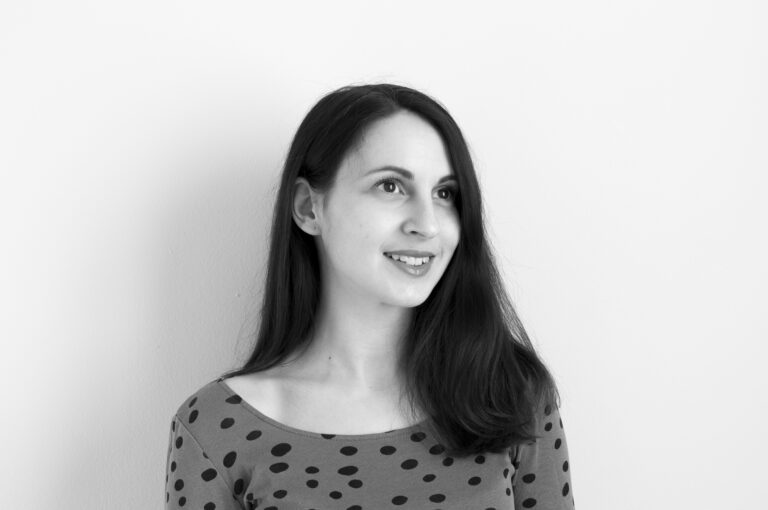
– born 1991 – graduated from the Hungarian University of Fine Arts in 2015 with a degree in painting. As a DLA student, her research focuses on the role of interpretation in the creative process. In her works, she reacts sensitively to the existential problems of her generation, on the difficulties related to work, creating a home, and “being an artist,” on which she approaches critically from her personal experiences. Large-scale installations, in which physical effort and monumental construction are balanced by fragile, finely crafted details, have become her medium of predilection. A recurring element of her work is both a visual and a conceptual reinterpretation of the notion of the game, and of the various devices that can be used in a game (swing, slide, seesaw, climbing frame, building block, maze). In her installations referring to childhood and evoking the atmosphere of playgrounds, the problems of the “adult world” intensify. Her conceptual thinking pairs up with spectacular technical solutions and use of materials, as well as a bold formal experimentation. Psychological observations, philosophical questions, or social and public topics constitute the narrative background of her works, through which she points out the complexity of human situations and the way in which the individual operates within society. In 2020, she received the Inside Express award of Balkon Contemporary Art Magazine, along with an opportunity for individual exhibition at the Budapest Gallery.
Understanding, which according to Heidegger is man’s basic mode of being, is also key to my artistic practice. I particularly focus on the role of interpretation in the creative process, as my working method is based on my own experiences, which are further activated by new impressions. My artistic approach is conceptual, but it is rather characterized by narrative thinking than by conceptuality. My works are narratives of a concept that is of high importance to me. I am motivated by influences deriving from the world around me, and which I process with art. And I attempt to integrate them along relevant points of connection into a new interpretive framework. I reflect on the time and era we live in, because the creative process is almost always triggered by an impulsive actuality that affects me on a personal level as well. In my mind, these impressions connect to another visual and signifying system that is suitable for an implicit or more explicit artistic depiction of a situation. The fact that these elements echo each other in me may stem from a broader material similarity, or even from the understanding of another work of art. In my diploma work1 for example, I painted the ladder rungs of a construction scaffolding using the colours of the bed-frame figuring in Duchamp’s Apolinère Enameled. At other times, connections arise from interpretational aspects left open in my previous works, by enlarging the chains of Suspended2 in the piece Punching Chain3 for example, or by rethinking them in the installation Ariadne4. This is why for me art is an opportunity to process and reinterpret the world, through which I can also influence the viewers’ thinking, thus adding to society’s attitude as a whole.
Thematically speaking, I deal with different registers of everyday life such as processing things that influencing our lives and developing survival strategies. I am interested in the individual’s challenges in the social system, and especially in the existential problems that affect my generation. In fact, I am mostly moved by the dilemmas of the human psyche and existence that are impregnated with the zeitgeist. The difficulty of finding one’s way, longing, and fear of the unknown goes naturally hand in hand with our existence. And although it is often in connection with specific events that I resonate with these basic human feelings, I always try to lead the narratives of my works toward a timeless universal value, question or problem. This duality between actuality and universality is at least as present in my work as the connection between social and individual. The social problems that I experience on my own skin give a personal, sometimes intimate tone to my works. For example, one of my early but personally determining work was inspired by the student demonstrations of December 20135. In this piece, my goal was to highlight the flaws of the Hungarian education policies and the institutional system based on my own experiences: the dismantled parquet at the centre of the installation was inspired by the terrible condition of the floor in my university studio.
My identity is characteristically part of my creative attitude, therefore social and political issues that reflect my origin, national identity or femininity do appear in my works. The feminine approach is also an integral part of my creative method. Although large-scale installations have become my main medium and their realization often forces me to exceed my own physical limits, there is usually a sense of subtlety and vulnerability in these works. The meticulous, strenuous, almost manic execution of each detail carries the legacy of the difficulties of womanhood. This attitude appears most obviously in my embroidered objects (Invisible work)6. By embroidering everyday cleaning supplies, I wanted to reflect on the invisible housework done by women.
In the topics I choose to deal with, my aim is to articulate my personal experiences and insights while trying to resolve them in a broader sphere of interpretation. The collision of my own existence with the outside world serves as a good starting point for me to create. This is why the motives I use to express the constraints, limitations, the quest for balance and for the right way that appear in my works7 also stem from the fundamental difficulties of my own life. Today in Hungary, struggling with early career challenges, artists have few opportunities that would provide the existential background necessary for their work. Currently, I am trying to maintain the balance with a civilian job and doctoral training. However, the time I spend doing art is consequently reduced and concentrated, and the process of creation slows down. However, art is a need for me, the lack of which causes physical symptoms, so not only do I try to progress in art year by year, but also to balance more and more the coordinate system of creative work and personal existence89101112131415.
The statement was written in collaboration with art historian Viktória Popovics (2021).
1Image: Bunker, 2015, wood, enamel paint, iron, paper, 250 x 250 x 250 cm, photo Attila Lakatos. Courtesy of the artist.2Image: Suspended, 2018, wood, enamel paint, iron, rope, 180 x 120 x 250 cm, photo and courtesy of the artist.
3Image: Punching chain, 2018, artificial leather, iron, polystyrene beads, sawdust, 500 x 100 x 50 cm. Photo and courtesy of the artist.
4Image: Ariadne, 2019, paper, acrylic, wood, rope, 270 x 300 x 270 cm. Photo and courtesy of the artist.
5Image: Judit Lilla Molnár, Playground, 2014, wood, industrial paint, iron, 130 x 130 x 90 cm. Photo and courtesy of the artist.
6Image: Judit Lilla Molnár, Invisible work, 2018, rubber gloves, sponges, embroidery yarn, dimensions variable. Photo and courtesy of the artist.
7Image: Judit Lilla Molnár, Immobilization, 2020, iron, acrylic, barricade tape, felt pen, 600 x 250 x 280 cm, photo Christian Ecker. Courtesy of the artist.
8Image: Judit Lilla Molnár, Angular bend, 2019, paper, acrylic, wood, watercolor, dimensions variable, photo Ágnes Kocsis. Courtesy of the artist.
9Image: Judit Lilla Molnár, Base on which you can build, 2019, acrylic, wood, paper, 240 x 220 x 105 cm. Photo and courtesy of the artist.
10Image: Judit Lilla Molnár, Handmade, 2012, toilet paper, embroidery yarn, dimensions variable. Photo and courtesy of the artist.
11Image: Judit Lilla Molnár, National protective equipment (Matyó edition), 2020, surgical mask, rubber gloves, dimensions variable. Photo and courtesy of the artist.
12Image: Judit Lilla Molnár, Limits, 2019, iron, wood, paper, dimensions variable. Photo: Ágnes Kocsis. Courtesy of the artist.
13Image: Judit Lilla Molnár, non-zero_game, 2020, wood, acrylic, 250 x 250 x 90 cm. Photo and courtesy of the artist.
14Image: Judit Lilla Molnár, Silence, 2014, wood, iron, paper, 200 x 30 x 40 cm. Photo and courtesy of the artist.
15Image: Judit Lilla Molnár, Suspended horizontal, 2020, wood, sponge, 250 x 250 x 90 cm. Photo and courtesy of the artist.
– szül. 1991 – 2015-ben végzett Magyar Képzőművészeti Egyetem festő szakán. DLA hallgatóként kutatásában az interpretáció alkotói folyamatban betöltött szerepét vizsgálja. Munkáiban érzékenyen reagál a saját generációját érintő egzisztenciális problémákra, a munka, az otthonteremtés és a “művész lét” nehézségeire, melyeket személyes élményeiből merítve helyez kritikai megvilágításba. Legfőbb médiumává a nagyméretű installációk váltak, amelyekben a fizikai erőfeszítést, a monumentális kivitelezést törékeny, finoman kidolgozott részletek ellensúlyozzák. Munkáinak visszatérő eleme a játék koncepciója, a játékra használható különböző eszközök (hinta, csúszda, libikóka, mászóka, építőkocka, labirintus) nemcsak vizuális, hanem fogalmi szinten való újraértelmezése. A gyermekkorhoz köthető, a játszóterek világát idéző installációiban a “felnőtt világ” problémái sűrűsödnek. Konceptuális gondolkodásmódja rendkívül látványos technikai megoldásokkal, anyaghasználattal és merész formai kísérletezéssel párosul. Műveinek narratív hátteréül pszichológiai megfigyelések, filozófia kérdések, vagy társadalmi-közéleti témák szolgálnak, melyek révén az emberi szituációk összetettségére, az egyén társadalmon belüli működésmódjára mutat rá. 2020-ban az a Balkon Kortárs Művészeti Folyóirat Inside Express díjának nyertese, melynek köszönhetően egyéni kiállítási lehetőséget kapott a Budapest Galériában.
A megértés, mely Heidegger szerint az ember alapvető létmódja, számomra képzőművészként is kulcsfontosságú. Kiemelten foglalkoztat az interpretáció szerepe az alkotói folyamatban, mivel saját munkamódszerem alapjait is a megélt tapasztalataim képezik, melyeket az új benyomások aktivizálnak. Művészeti hozzáállásom konceptuális, de nem annyira a fogalmiság, mint inkább a narratív gondolkodás jellemzi. A munkák a számomra kiemelt jelentőséggel bíró koncepció narratívái. A körülöttem lévő világból leszűrt hatások motiválnak, amelyek feldolgozására a művészetet használom. Ezeket a párlatokat pedig igyekszem számomra releváns kapcsolódási pontok mentén egy új értelmezési vázban egyesíteni. Érzékenyen reagálok a velem haladó időre és korra, ugyanis az alkotói folyamatot szinte minden esetben egy impulzív aktualitás váltja ki, amely személyes szinten is hatást gyakorol rám. Ezek a benyomások kapcsolódnak össze a fejemben egy másik vizuális és jelentés rendszerrel, amely alkalmas a szituáció burkolt vagy kevésbé burkolt képzőművészeti leképzésére. Ez a belső egymásra rímelés fakadhat általános tárgyi hasonlóságból, de akár egy másik művészeti alkotás megértéséből is. Diplomamunkámban1 például az építmény melletti állványzat létrafokait Duchamp Apolinère Enameled című képén megjelenő gyerekágy színeinek megfelelően festettem le. Máskor pedig a kapcsolódások saját korábbi munkáim nyitottan hagyott értelmezési aspektusaiból születnek, mint például a Függőhelyzet2 című munka láncainak felnagyításával a Bokszlánc3 című műben, vagy ugyanezek újragondolásával az Ariadné4 című installációban. A művészet számomra éppen ezért egy lehetőség a világ feldolgozására és újra értelmezésére, amely révén én is hatással lehetek a befogadók gondolkodására, hozzátéve ezáltal a társadalmi szemléletmód nagy egészéhez.
Tematikai szempontból a mindennapi élet különböző regiszterei foglalkoztatnak; az életünkre ható dolgok feldolgozása és túlélési stratégiák kifejlesztése. Az egyén kihívásai érdekelnek a társadalom rendszerében, különösen kiélezve a generációmat érintő léthelyzet-problémákra. Tulajdonképpen az emberi psziché és lét korszellemmel átitatott dilemmái azok, amelyek megmozgatnak. Az útkeresés nehézsége, az elvágyódás és az ismeretlentől való félelem természetes velejárója az létezésünknek. S bár nem egyszer konkrét eseményekhez kapcsolódva rezonálok munkáimban ezekre az alapvető emberi érzésekre, mindig törekszem arra is, hogy a mű narratívájából leolvasható legyen valami időtlen univerzális érték, kérdésfelvetés vagy probléma. Ez a kettősség az aktualitás és az univerzalitás között legalább annyira jelen van a munkáimban, mint a társadalmi és az egyéni összekapcsolása. A saját bőrömön megtapasztalt társadalmi problémák adják munkáim személyes, olykor intim hangvételét. Egyik korai, de számomra meghatározó munkám például a 2013 decemberi diáktüntetések inspirációjára született meg5. Ebben a műben saját tapasztalataimat felhasználva a magyar oktatáspolitika és intézményrendszer hibáira szerettem volna rávilágítani. Az installáció közepén elhelyezett felbontott parkettát ugyanis az egyetemi műtermem rettenetes állapotban lévő padlózata ihlette.
Identitásom karakteresen részét képezi alkotói hozzáállásomnak, így olyan társadalmi, politikai kérdések is megjelennek munkáimban, amelyek származásomra, nemzeti identitásomra vagy nőiségemre reflektálnak. A női szemléletmód az alkotói metódusomnak is szerves részét képezi. Bár a nagyméretű installációk váltak a legfőbb médiumommá, melyek kivitelezése sok esetben saját fizikai határaim meghaladására késztetnek, általában ezekben a munkákban is tetten érhető egyfajta finomság és sérülékenység. Az egyes részletek aprólékos, önmegerőltető már-már mániákus kivitelezése a női lét nehézségeinek örökségét hordozza magában. Ez az attitűd hímzett objektjeimen rajzolódik ki leginkább (Invisible work)6. A hétköznapi takarítóeszközök kihímzésével a nők által végzett láthatatlan házimunkára szerettem volna reflektálni.
Témaválasztásaimban a személyes tapasztalataimat és meglátásaimat próbálom artikulálni, miközben igyekszem azokat egy tágabb értelmezési szférában feloldani. Saját létem ütköztetése a külvilággal jó kiindulópontként szolgál számomra az alkotáshoz. Éppen ezért a műveimben7 megjelenő megkötöttség, korlátozottság, egyensúly- és útkeresés kifejezésére használt motívumok is életem alapvető nehézségeiből fakadnak. Ma Magyarországon a pályakezdő művész kihívásaival küzdve kevés olyan lehetőség áll a rendelkezésünkre, amely biztosítaná az alkotáshoz szükséges egzisztenciális hátteret. Jelenleg az egyensúlyt egy civil munkahely és a doktori képzés által próbálom fenntartani. A művészettel töltött idő azonban így redukálódik, koncentrálódik, az alkotás folyamata lelassul. A művészet azonban számomra olyan szükséglet, amelynek hiánya fizikális tüneteket okoz, így igyekszem évről évre nem csak a művészetben fejlődni, hanem egyre kiegyenlítettebbé tenni a görbét az alkotómunka és a személyes lét koordináta rendszerében89101112131415.
A statement Molnár Judit Lilla és Popovics Viktória művészettörténész együttműködésében valósult meg (2021).
1kép: Molnár Judit Lilla, Bunker, 2015, fa, zománcfesték, vas, papír, 250 x 250 x 250 cm, fotó Lakatos Attila. A művész jóvoltából.2kép: Molnár Judit Lilla, Suspended, 2018, fa, zománcfesték, vas, kötél, 180 x 120 x 250 cm. A művész fotója. A művész jóvoltából.
3kép: Molnár Judit Lilla, Punching chain, 2018, műbőr, vas, polisztirol gyöngyök, fűrészpor, 500 x 100 x 50 cm. A művész fotója. A művész jóvoltából.
4kép: Molnár Judit Lilla, Ariadne, 2019, papír, akril, fa, kötél, 270 x 300 x 270 cm. A művész fotója. A művész jóvoltából.
5kép: Molnár Judit Lilla, Playground, 2014, fa, ipari festék, vas, 130 x 130 x 90 cm. A művész fotója. A művész jóvoltából.
6kép: Molnár Judit Lilla, Invisible work, 2018, gumikesztyű, szivacs, hímzőfonal, változó méret. A művész fotója. A művész jóvoltából.
7kép: Molnár Judit Lilla, Immobilization, 2020, vas, akril, barikádszalag, filctoll, 600 x 250 x 280 cm, fotó Christian Ecker. A művész jóvoltából.
8kép: Molnár Judit Lilla, Angular bend, 2019, papír, akril, fa, akvarell, változó méret, fotó Kocsis Ágnes. A művész jóvoltából.
9kép: Molnár Judit Lilla, Base on which you can build, 2019, akril, fa, papír, 240 x 220 x 105 cm. A művész fotója. A művész jóvoltából.
10kép: Molnár Judit Lilla, Handmade, 2012, wc-papír, hímzőfonal, változó méret. A művész fotója. A művész jóvoltából.
11kép: Molnár Judit Lilla, National protective equipment (Matyó edition), 2020, műtéti maszk, gumikesztyű, változó méret. A művész fotója. A művész jóvoltából.
12kép: Molnár Judit Lilla, Limits, 2019, vas, fa, papír, változó méret. Fotó: Kocsis Ágnes. A művész jóvoltából.
13kép: Molnár Judit Lilla, non-zero_game, 2020, fa, akril, 250 x 250 x 90 cm. A művész fotója. A művész jóvoltából.
14kép: Molnár Judit Lilla, Silence, 2014, fa, vas, papír, 200 x 30 x 40 cm. A művész fotója. A művész jóvoltából.
15kép: Molnár Judit Lilla, Suspended horizontal, 2020, fa, szivacs, 250 x 250 x 90 cm. A művész fotója. A művész jóvoltából.
